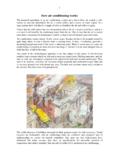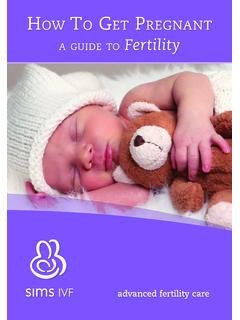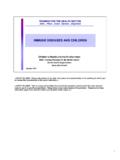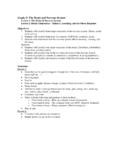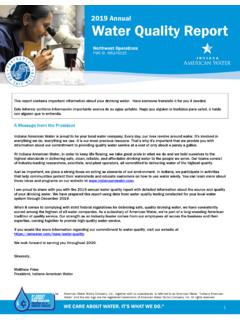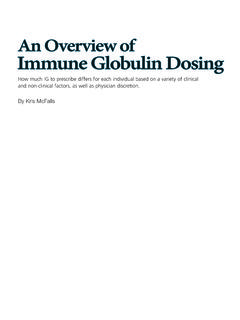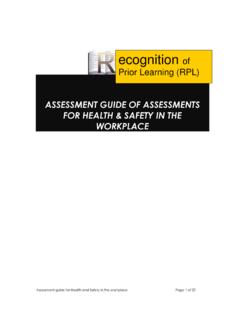Transcription of Low Dose Naltrexone and Autoimmune Diseases
1 1 Low Dose Naltrexone and Autoimmune Diseases : Emerging research about the benefits of a safe and inexpensive drug on Autoimmune Diseases The History of Naltrexone Naltrexone is an opioid blocker that was approved by the FDA in 1984 at 50mg for opioid dependence and in 1995 for alcoholism. In the mid-1980 s, Dr. Bihari, a neurologist first involved in treating heroin addicts with Naltrexone , found that Naltrexone may have a beneficial effect on the immune system. He shifted his focus to improving the immune system in AIDS patients before the advent of antiretroviral therapy and began experimenting with the use of a low dose of Naltrexone , generally doses less than 5mg. Because MS is known to have an Autoimmune component, he also began testing low dose Naltrexone (LDN) in MS patients. While there are no published studies of Dr. Bihari s findings, he reports that the use of LDN in his practice has reduced exacerbations of MS by 90% and has helped keep a large group of AIDS patients from progressing to a more advanced stage.
2 The Immune System and Autoimmune Disorders Low dose Naltrexone has been tested in people with a wide variety of Diseases including Autoimmune Diseases , HIV and cancer. All of these Diseases have one thing in common: a problem with the immune system. The immune system is a very complex network of organs, cells and regulating chemicals that works to clear infection and protect the body from disease. This makes pinpointing the way that Naltrexone affects the immune system difficult until more research is done in humans. With Autoimmune disorders, something goes wrong with the system and the body begins to attack itself. These disorders can affect or damage many organs in the body. It can be difficult to diagnose an Autoimmune disorder because many have similar symptoms. Common are fatigue, muscle aches and low fever, and these Diseases generally have flare-ups and remissions. In a normal, healthy person the immune system is able to recognize the difference between its own cells and cells that do not belong to it, like bacteria, fungi, viruses and cancer cells.
3 In people with Autoimmune disorders, the body has a hard time telling which cells are its own and which are not. This causes the body to attack some kinds of its own cells. An example, in MS the body attacks the cells surrounding nerves which cause numbness and spasms. There are few theories as to why this happens. The most common theory is that the immune system is too strong, which causes the body to be overzealous and attack itself. Dr. Bihari s theory is that the immune system is weak in Autoimmune disorders which cause it to forget which cells are its own and which are foreign. Yet another states an imbalance between two components (Th1 and Th2) of the immune system is the cause of Autoimmune A decrease in Th1 can cause increased risk of infection and cancer, while an increase in Th2 can cause and increase risk of Autoimmune disorders and allergies. The fact remains that the immune system is a complicated network and a great deal about it is yet to be discovered 2and understood, and that even less is known about the mechanism of Autoimmune disorders.
4 Naltrexone and Autoimmune Disorders understanding the exact mechanism by which Naltrexone helps people with Autoimmune disorders will be impossible to do until there are more studies done. For now there are a few different theories about why Naltrexone works for Autoimmune disorders. Naltrexone blocks both opioids in the form of drugs, including heroin, oxycodone, morphine, etc, and the body s own opioids, known as endorphins. Endorphins are the body s natural pain killers and produce a sense of well being. Endorphins are released in large amounts during injury or severe physical stress. Endorphins and opioids are known to have an effect on the immune system; however, there is conflicting evidence about if the increases or suppresses the immune ,3,4 The mostly widely accepted theory of the mechanism of low dose Naltrexone by its proponents, including Dr. Bihari, is that Naltrexone blocks the receptors of endorphins for a few hours during which time the body works to create more endorphins to overcome this blockade.
5 They think that endorphins help strengthen the immune system and that people with Autoimmune Diseases generally have low levels of endorphins. By increasing these endorphins, the immune system is normalized and symptoms of these Diseases are relieved. This seems like a nice theory; however, there is data from studies in animals that shows that endorphins suppress the immune system. If this instead is true, Naltrexone may still provide benefits. If Autoimmune disorders are caused by an overactive immune system, Naltrexone may help by suppressing the immune system. There is another, more complicated theory about low dose Naltrexone dealing with the rebalancing of two components of the immune system. Another opioid blocker, naloxone, has been shown in trials to increase Th1 and decrease Th2 Naltrexone may have this same effect which may balance the immune system. Remember, a decrease in Th1 can cause chronic infections and an increased risk of cancer and an increase in Th2 can cause allergies and increased risk of Autoimmune disorders, so rebalancing this system would theoretically increase the body s defense against infection while decreasing the severity of Autoimmune disorders.
6 Here is still a list of other possible ways that low dose Naltrexone can benefit Autoimmune disorders which include reduced inflammation, reduced oxidative stress, reduced apoptosis of oligodendrocytes in MS, decreased inflammatory cytokines, increased tissue repair and wound healing, increased CD4+ levels, and increased levels of NK There is obviously a need for published research on low dose Naltrexone and endorphins in order to help understand how and to what extent low dose Naltrexone provides symptom relief. Clinical Trials Completed Trial: An open-labeled pilot prospective trial of 17 patients with active Crohn s disease receiving Naltrexone nightly for 12 weeks was conducted at Penn State and recently published in the American Journal of Gastroenterology. Patients completed 3questionnaires and quality of life surveys before treatment and every 4 weeks until one month after discontinuation of therapy.
7 Eighty-nine percent of patients had some response to therapy and 67% achieved a remission. The most common side effect was sleep disturbances, which occurred in seven patients. They concluded that LDN therapy is safe and effective in people with active Crohn's disease but further studies should be Trials in Progress: Currently there are many trials looking into the benefits of low dose Naltrexone in a variety of Diseases including Crohn s disease, MS, fibromyalgia and HIV. Below is a short description of these trials. A Phase II placebo-controlled clinical trial for Crohn s disease is being studied at Penn State by a grant from the NIH. A clinical trial of HIV/AIDS has recently received approval in Mali, Africa. Patients will receive traditional therapy, traditional therapy and LDN, or LDN alone. A clinical trial of LDN in the treatment of fibromyalgia at Stanford Medical Center began in October 2007.
8 A clinical trial for Primary Progressive MS in Italy was completed in fall 2007, with results yet to be published. The chief investigator, Dr. Maira Gironi, reported this general impression: LDN could be useful for a quite good number of MS patients affected with spasticity, fatigue and pain. The results of this study will hopefully help explain the relationship between Naltrexone and endorphin levels as they were measured throughout the study. Other trials for MS include two double-blind, placebo-controlled crossover studies at UC San Francisco and the MindBrain Consortium in Akron, OH. Dosing Low dose Naltrexone is used in the range of mg. Generally doses of LDN and LDN should be taken before bedtime, between 9PM and 2AM. Side effects Sleep disturbances and stomach upset are the most common side effects of low dose Naltrexone and generally decrease within the first week of therapy. Some people recommend taking Naltrexone in the morning if sleep disturbances remain a problem; however, others say this may decrease the effect of Naltrexone or even have a negative effect on the immune system.
9 Patients have reported taking a snack with Naltrexone helps alleviate sleeplessness. If sleep disturbances persist after the first week, the dose may be reduced, generally from to 3mg nightly. Warnings Chronic opioid therapy: Naltrexone blocks opioids in the body for about four hours. Patients who are dependent on frequent opioids for pain control (tramadol, morphine, oxycodone, fentanyl, vicodin, codeine, etc.) should not take Naltrexone unless they are able to slowly stop these medications. Non-narcotic pain medications like aspirin, Tylenol and ibuprofen do not interact with Naltrexone . If 4a patient restarts an opioid after taking Naltrexone , a lower dose should be initiated as up regulation of opioid receptors may occur and respiratory suppression may occur. Rapid opioid withdrawal and extreme pain can occur in patients who take Naltrexone and opioids together. Pregnancy: Naltrexone is pregnancy category C.
10 Pregnant women should not take Naltrexone unless they have weighed the potential benefits and risks with their doctor. Liver Disease: Naltrexone 50mg tablets have a black box warning as adverse liver effects have been seen in people taking 100-300mg of Naltrexone daily. These effects have not been seen with low dose Naltrexone , although people with liver disease and their doctors should be aware of this possible side effect before use. Immunosuppressive medications: taking low dose Naltrexone will theoretically counteract the actions of these drugs. People on these medications after receiving an organ transplant should not take low dose Naltrexone . People taking these medications for others reasons, such as rheumatoid arthritis, should weigh the benefits and risks with their doctors. Safety and Effectiveness Naltrexone is generally a safe drug. Because most clinical trials of low dose Naltrexone have still not been completed and published, its effectiveness is not accurately known at this point.
